
Even if you're not into electronic music, you certainly can recognize them. Like Deadmau5, 80s band KISS and other musical icons, Daft Punk has invested time, creativity and money into an identity that wouldn't only make them world famous, but also make them stand out from hordes of artists that go unrecognizable any day of the week.
From iconic album covers to cinematic videos to action figures, Daft Punk has become something much bigger than their music. A mix of superheroes and stage gods, but human after all.
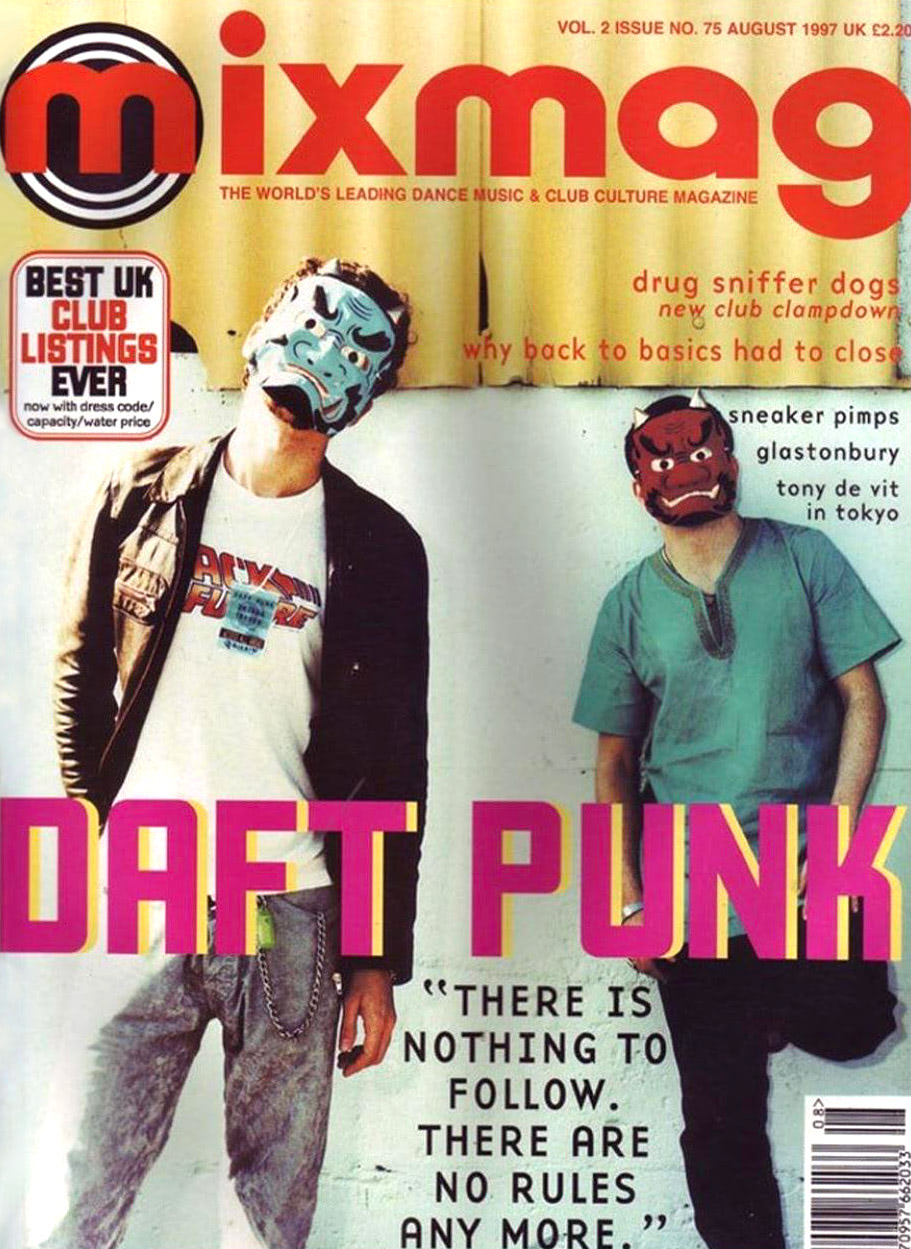
© 1997 Mixmag Magazine Formed in 1993 in Paris by Thomas Bangalter and Guy-Manuel, Daft Punk is a French electronic music duo that achieved early popularity in the late 1990s as part of the French house movement, combining elements of house music with funk, disco, techno, rock, and synth-pop.
Their 1997 debut studio album, "Homework", gave them an early acclaimed success within the electronic segment internationally. In 1999 the French duo entered the so-called "Discovery" era, which catapulted them even higher in the mainstream with hits like “One More Time”, “Digital Love” and "Harder, Better, Faster, Stronger" just to name a few.
At the same time, and fully aware of the dimension the work was taking, Guy-Man and Thomas Bangalter started to seek an identity to match the direction their music was taking together with the rapid ascension of their music. To synthesize their vision, they went to Hollywood special effects guru, Tony Gardgner at Alterian Studios.
Founded in 1984 in Los Angeles, Alterian specializes in the design and creation of animatronic and prosthetic makeup effects for films, commercials, television projects and live events. Many of the special effects you see in Hollywood movies are made by them.
Gardner recalls:
“Thomas and Guy came in and basically laid out what their idea was for these characters that they wanted to create. They wanted to be able to completely hide behind them and have the personalities be part of the musical experience as opposed to the people because it wasn't about the people it was about the music.”
“Thomas and I both have a film that we consider one of our favorites which is the Day the Earth Stood Still and that sort of became a starting point for his character but the challenge was to create something that had a linear readout that he could type responses to people onto his arm.”
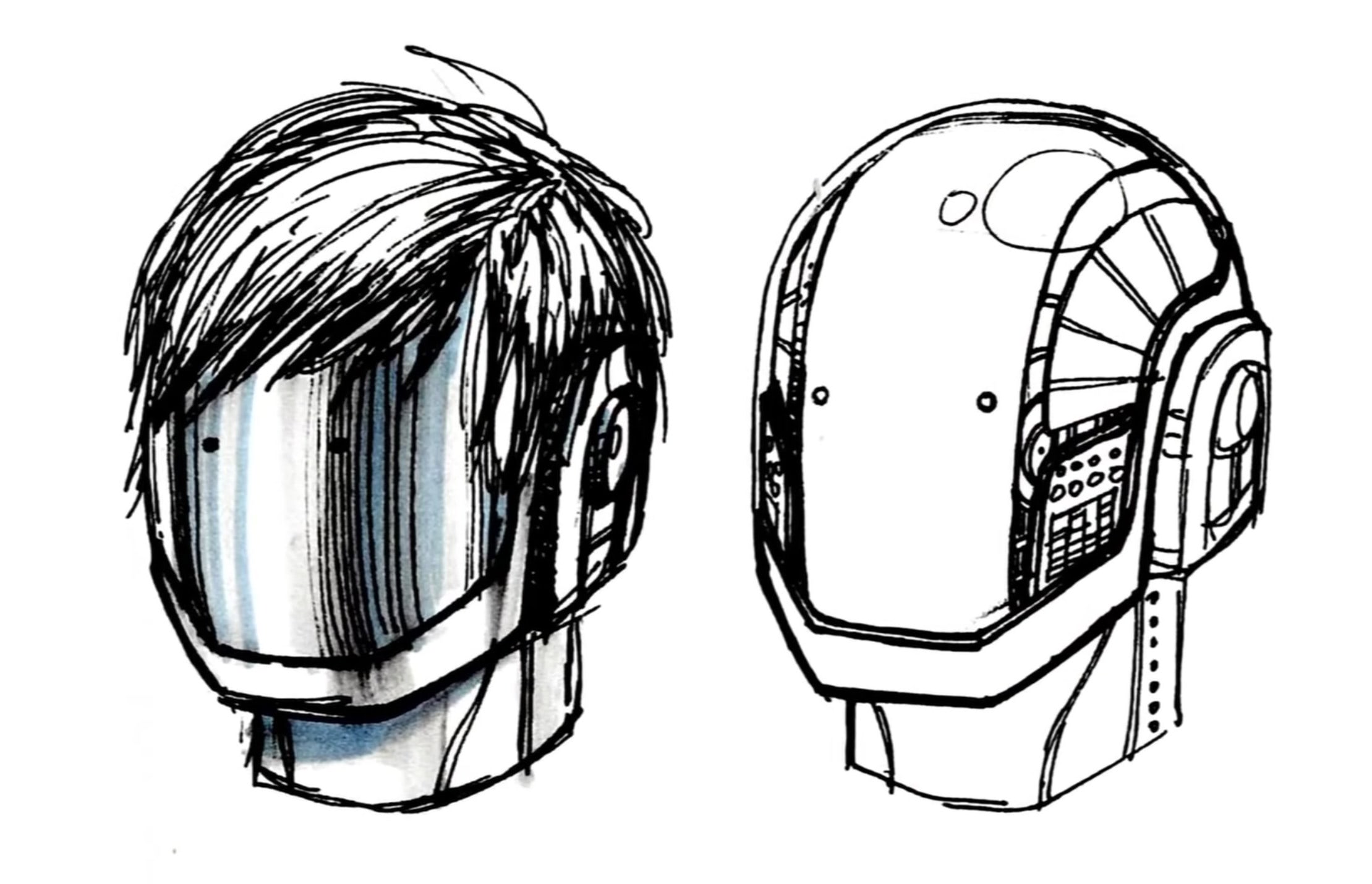
© Alex & Martin, Alterian Inc, Daft Punk Guy-Man's concept was more of a vertical screen to work in where we could take advantage of the length of it and have stuff run through it, but these were all ideas that came from Thomas and Guy-Man in the very beginning.
They brought with them Cedric, Alex and Martin, who were involved in the production of their videos at the time, and I think it was either Alex or Martin who did some illustrations that mapped out the general proportions for both helmets.
Gardner continues: "We took head casts with water-based clay, and just sat around a table and start sculpting some stuff. The initial characters start out with hair, very much like anime-style robots."
"Once it all went together the first time is was like: there's a lot of parameters that needed to be taken into consideration to make it all work."
The idea with Guy's helmet in the beginning was it was gonna be gold like the NASA space helmet.
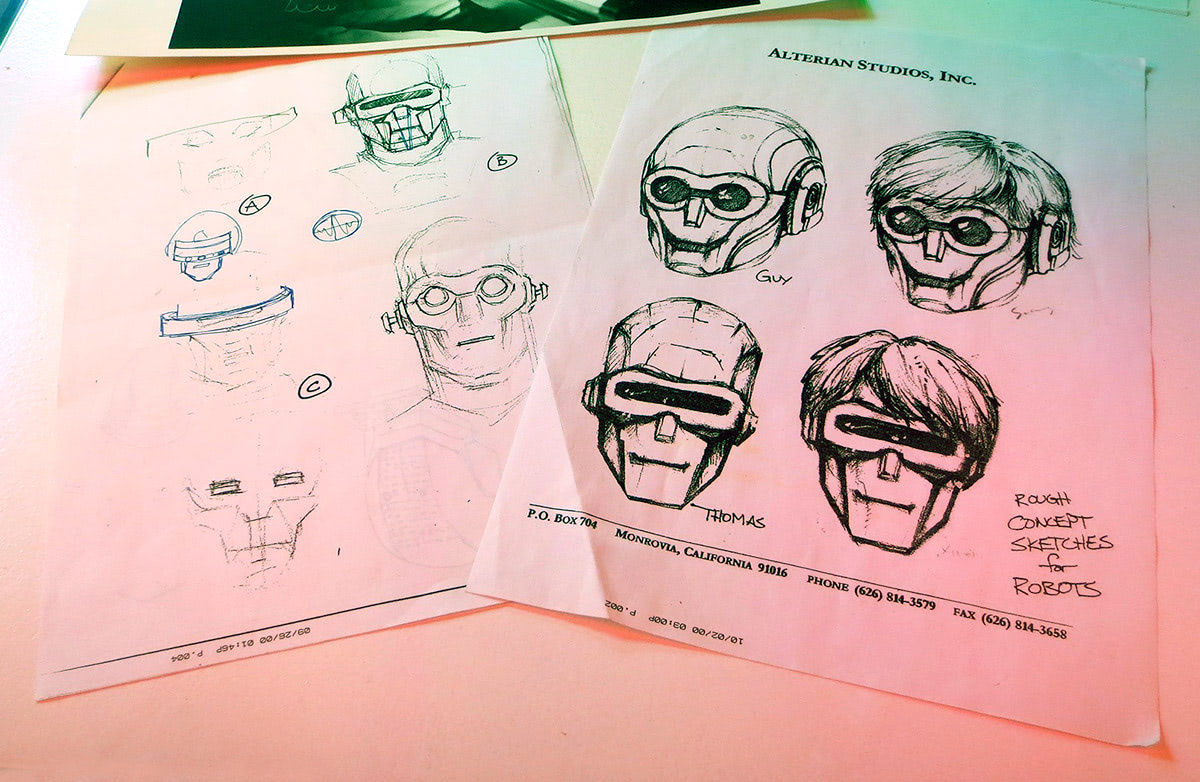
© Alex & Martin, Alterian Inc, Daft Punk Around 2006, when the Electroma video was released, the helmets visors had gone dark and all the electronics had been stripped out. The shape of the mouth changed on Thomas helmet - It went from a smile to a flat slit.
Alterian engaged the guy who designed the famous Jumbotron screens to do Guy-Man's LED display self-contained in a really tight helmet.
There was very little room to work in. To solve that, they had these sort of spaceman backpacks with cables that went up to the back of their heads.
For the metallic finish, an Ohio-based company, which used to do the coating for NASA's spacesuits, was hired to do the first helmet shells.
Thomas and Guy-Man had this great idea where their entire wardrobe would be highlighted with the live wire used as the piping so that on a dark stage they would read as a silhouette that was lit up. For that, all-black versions of the helmets were made.
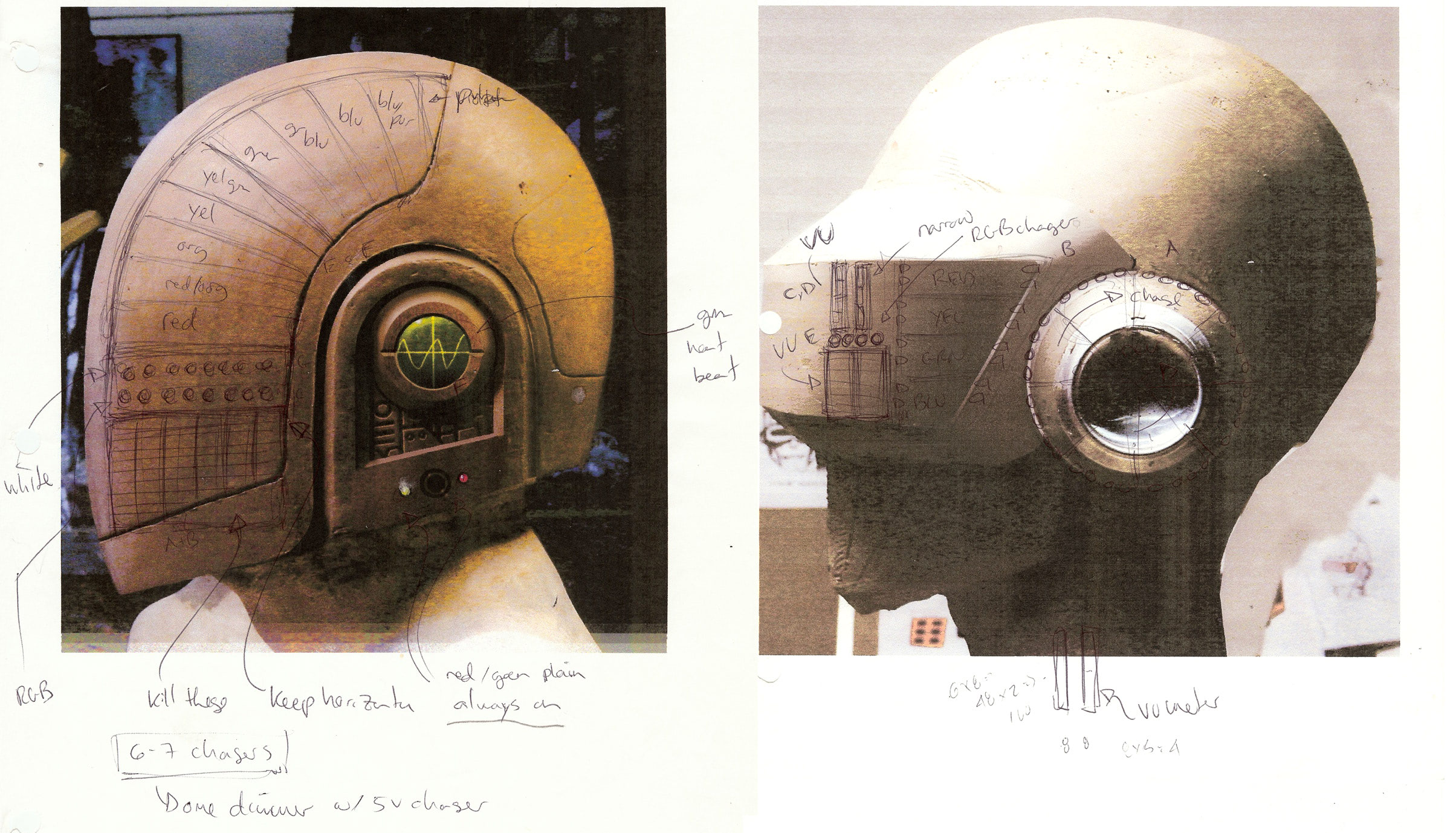
© Alterian Inc The resources at the time were fairly limited fairly large, which meant the team had to start with something ugly and take it to the next level. Today, advanced screens can be packed is very small and thin spaces. At the time, the readout displays been used were considered cutting edge, but not so much anymore.
You never expect the longevity that something's going to have. It's always a nice surprise to see it continue to survive and people actually enjoy it. It's nice to see them continue to change it and and have it evolved time after time.
Around 2009, the French duo decided to shift the product of their more recent helmets to Ironhead Studio.
Also based out of Los Angeles, the studio also specializes in costumes, special effects and advanced props for the entertainment industry, including advertising, television and films.
Led by industry leader Jose Fernandez, the studio has produced costumes and props for movies like Godzilla, Men in Black, Alien III, Batman Returns, Planet of the Apes, Hellboy, X-Men, the Fantastic Four, and so many others.
Since then, the studio has been responsible for creating all the modern variations of the iconic helmets, including the ones shown in the blockbuster movie TRON, as well as the shiny white ones worn in the 56th Annual Grammy Awards.
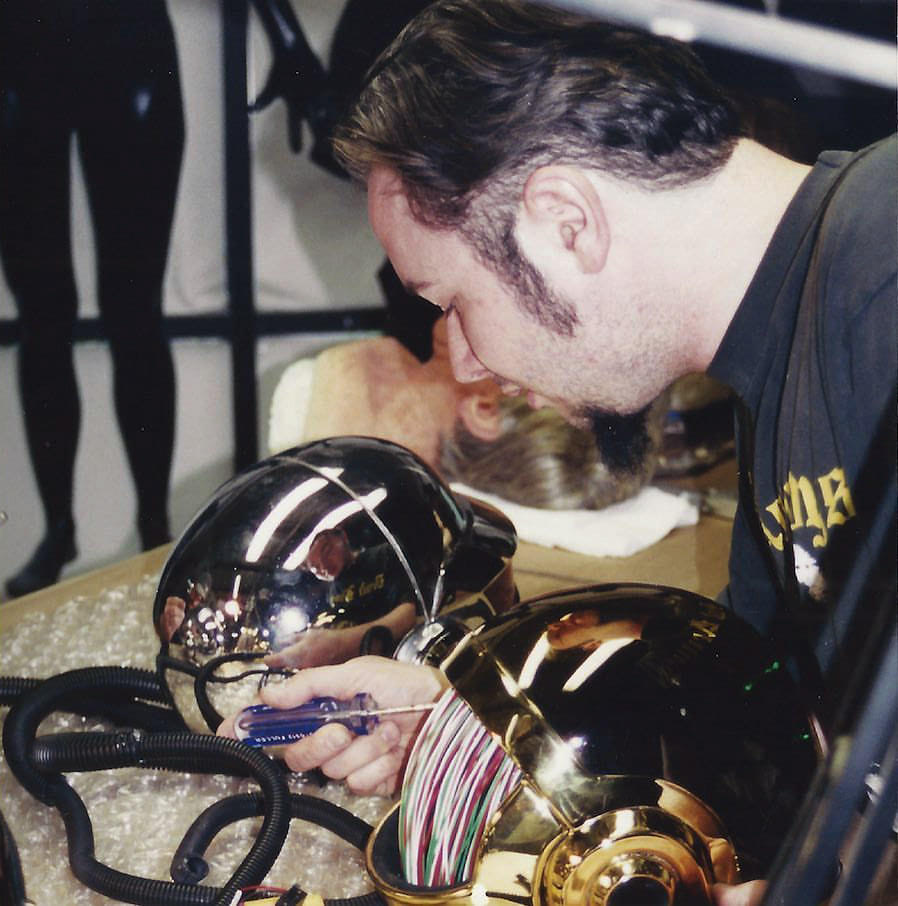
© Alterian Inc As of today, Ironhead continues to be the manufacturer of Daft Punk costumes, especially the helmets and gloves, which feature more streamlined LED displays without the need of having so many cables and wires connecting all the parts together.
The duo called it quits in 2021, after nearly three decades of anonymous music-making from underneath their signature robot helmets. New singles and chart hits may not be around, but their legacy and catalog of avant-garde musical work continues as fresh as it was in the 90s.
There's no doubt that the iconic robot helmets became a key element in the group's work and concept as a whole, catapulting them from "just another DJ band" to a internationally-recognizable act whose live performances inspired a whole generation of similar artists like deadmau5 and many others.
If you're an artist or music act interested in having a very unique stage identity of your own, check out the large variety of futuristic helmets and masks with controllable LED displays from Hypebrother.
Most models are customisable, allowing you modify them and create a very personal design that matches your creative concept and needs.
Back to The Blog®
From iconic album covers to cinematic videos to action figures, Daft Punk has become something much bigger than their music. A mix of superheroes and stage gods, but human after all.

© 1997 Mixmag Magazine Formed in 1993 in Paris by Thomas Bangalter and Guy-Manuel, Daft Punk is a French electronic music duo that achieved early popularity in the late 1990s as part of the French house movement, combining elements of house music with funk, disco, techno, rock, and synth-pop.
Their 1997 debut studio album, "Homework", gave them an early acclaimed success within the electronic segment internationally. In 1999 the French duo entered the so-called "Discovery" era, which catapulted them even higher in the mainstream with hits like “One More Time”, “Digital Love” and "Harder, Better, Faster, Stronger" just to name a few.
At the same time, and fully aware of the dimension the work was taking, Guy-Man and Thomas Bangalter started to seek an identity to match the direction their music was taking together with the rapid ascension of their music. To synthesize their vision, they went to Hollywood special effects guru, Tony Gardgner at Alterian Studios.
Founded in 1984 in Los Angeles, Alterian specializes in the design and creation of animatronic and prosthetic makeup effects for films, commercials, television projects and live events. Many of the special effects you see in Hollywood movies are made by them.
Gardner recalls:
“Thomas and Guy came in and basically laid out what their idea was for these characters that they wanted to create. They wanted to be able to completely hide behind them and have the personalities be part of the musical experience as opposed to the people because it wasn't about the people it was about the music.”
“Thomas and I both have a film that we consider one of our favorites which is the Day the Earth Stood Still and that sort of became a starting point for his character but the challenge was to create something that had a linear readout that he could type responses to people onto his arm.”

© Alex & Martin, Alterian Inc, Daft Punk Guy-Man's concept was more of a vertical screen to work in where we could take advantage of the length of it and have stuff run through it, but these were all ideas that came from Thomas and Guy-Man in the very beginning.
They brought with them Cedric, Alex and Martin, who were involved in the production of their videos at the time, and I think it was either Alex or Martin who did some illustrations that mapped out the general proportions for both helmets.
Gardner continues: "We took head casts with water-based clay, and just sat around a table and start sculpting some stuff. The initial characters start out with hair, very much like anime-style robots."
"Once it all went together the first time is was like: there's a lot of parameters that needed to be taken into consideration to make it all work."
The idea with Guy's helmet in the beginning was it was gonna be gold like the NASA space helmet.

© Alex & Martin, Alterian Inc, Daft Punk Around 2006, when the Electroma video was released, the helmets visors had gone dark and all the electronics had been stripped out. The shape of the mouth changed on Thomas helmet - It went from a smile to a flat slit.
Alterian engaged the guy who designed the famous Jumbotron screens to do Guy-Man's LED display self-contained in a really tight helmet.
There was very little room to work in. To solve that, they had these sort of spaceman backpacks with cables that went up to the back of their heads.
For the metallic finish, an Ohio-based company, which used to do the coating for NASA's spacesuits, was hired to do the first helmet shells.
Thomas and Guy-Man had this great idea where their entire wardrobe would be highlighted with the live wire used as the piping so that on a dark stage they would read as a silhouette that was lit up. For that, all-black versions of the helmets were made.

© Alterian Inc The resources at the time were fairly limited fairly large, which meant the team had to start with something ugly and take it to the next level. Today, advanced screens can be packed is very small and thin spaces. At the time, the readout displays been used were considered cutting edge, but not so much anymore.
You never expect the longevity that something's going to have. It's always a nice surprise to see it continue to survive and people actually enjoy it. It's nice to see them continue to change it and and have it evolved time after time.
Around 2009, the French duo decided to shift the product of their more recent helmets to Ironhead Studio.
Also based out of Los Angeles, the studio also specializes in costumes, special effects and advanced props for the entertainment industry, including advertising, television and films.
Led by industry leader Jose Fernandez, the studio has produced costumes and props for movies like Godzilla, Men in Black, Alien III, Batman Returns, Planet of the Apes, Hellboy, X-Men, the Fantastic Four, and so many others.
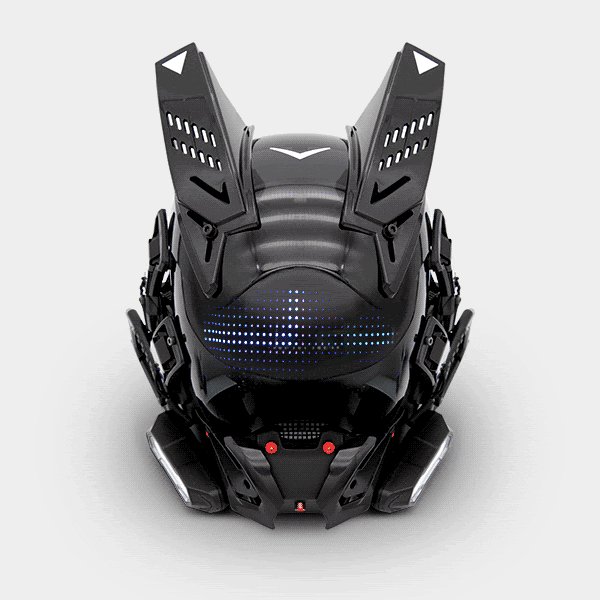 Cyberpunk Mask /V1 Cyberpunk Mask /V1 |
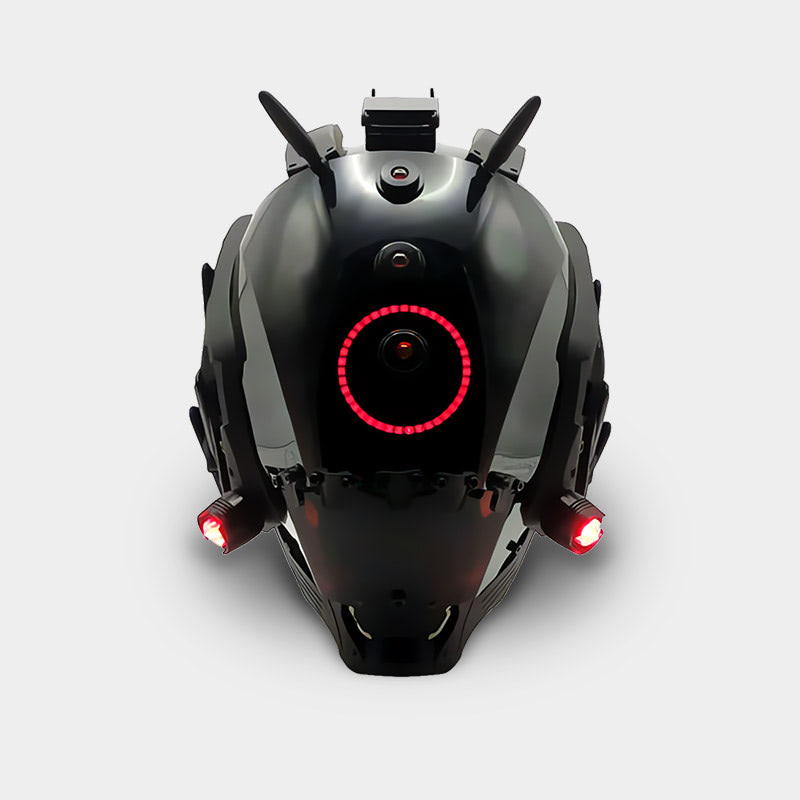 BCI Cyberpunk Helmet BCI Cyberpunk Helmet |
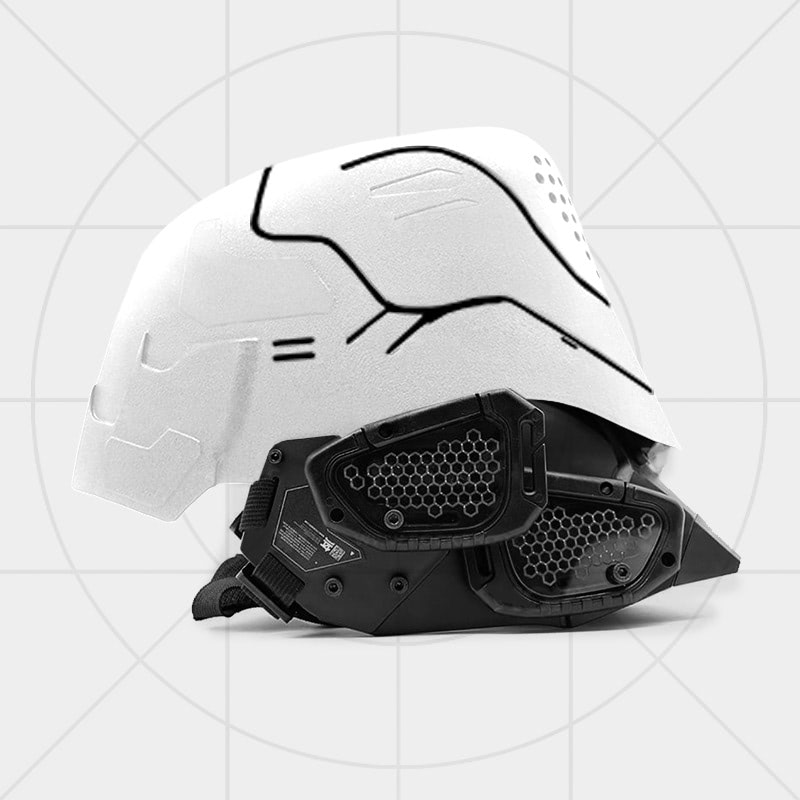 Custom Cyberpunk Helmet Custom Cyberpunk Helmet |
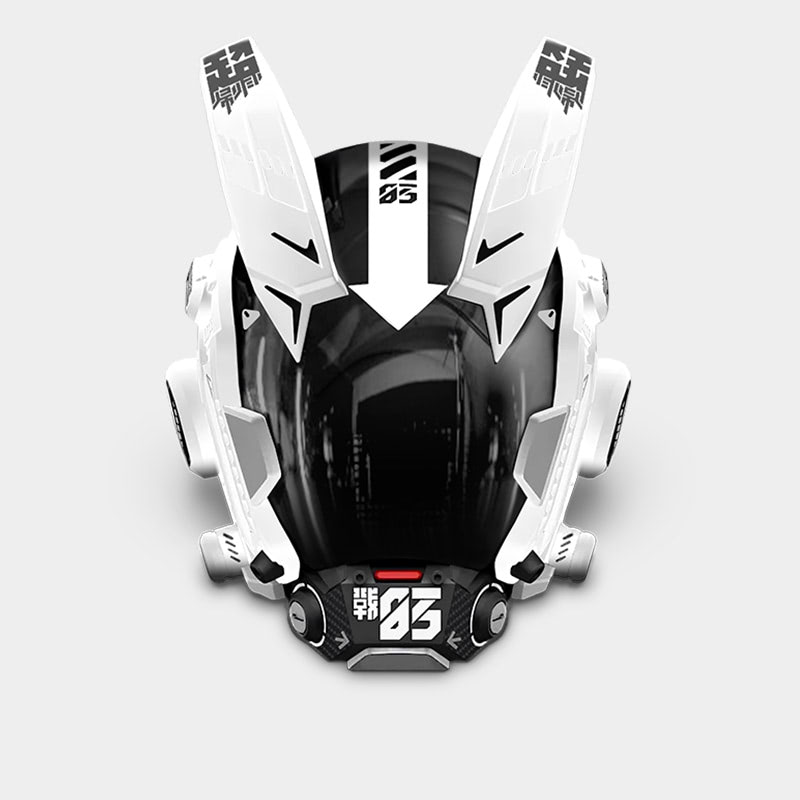 Cyberpunk Mask 03 Cyberpunk Mask 03 |
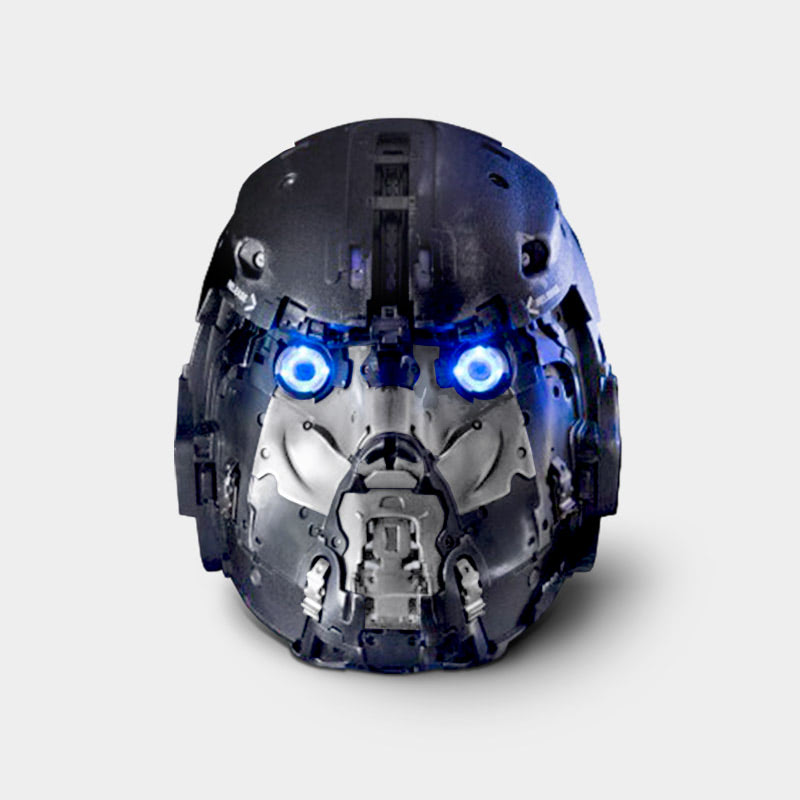 Warriors of Future Helmet Warriors of Future Helmet |

© Alterian Inc As of today, Ironhead continues to be the manufacturer of Daft Punk costumes, especially the helmets and gloves, which feature more streamlined LED displays without the need of having so many cables and wires connecting all the parts together.
The duo called it quits in 2021, after nearly three decades of anonymous music-making from underneath their signature robot helmets. New singles and chart hits may not be around, but their legacy and catalog of avant-garde musical work continues as fresh as it was in the 90s.
There's no doubt that the iconic robot helmets became a key element in the group's work and concept as a whole, catapulting them from "just another DJ band" to a internationally-recognizable act whose live performances inspired a whole generation of similar artists like deadmau5 and many others.
If you're an artist or music act interested in having a very unique stage identity of your own, check out the large variety of futuristic helmets and masks with controllable LED displays from Hypebrother.
Most models are customisable, allowing you modify them and create a very personal design that matches your creative concept and needs.
You May Also Like
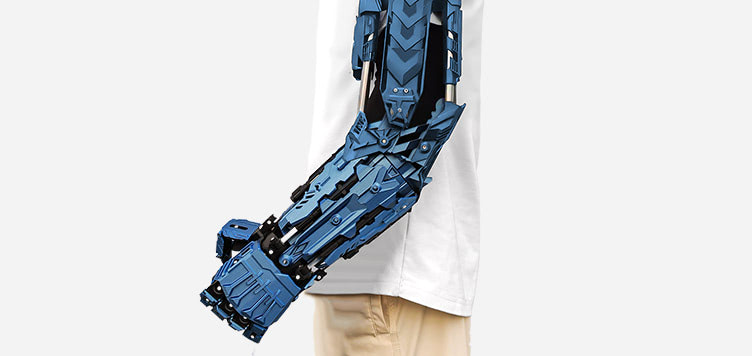 |
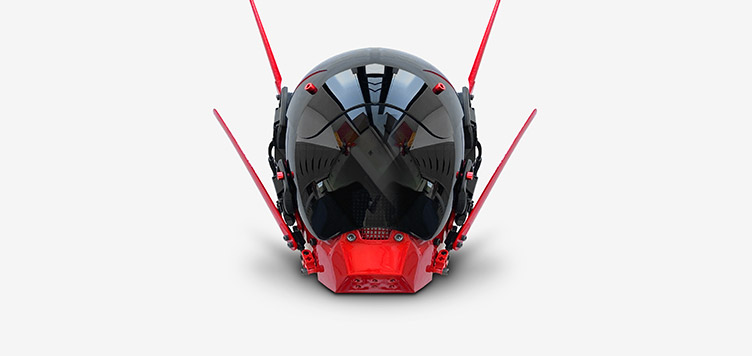 |
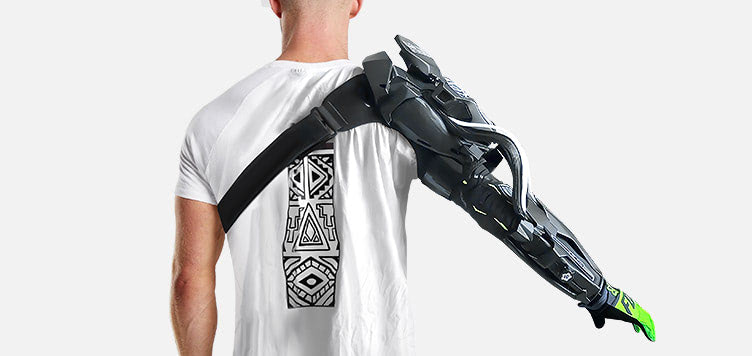 |
If you're a brand, label or designer looking to promote your business, get in touch with us to launch or sell your original products and discuss product placement or campaigns.
